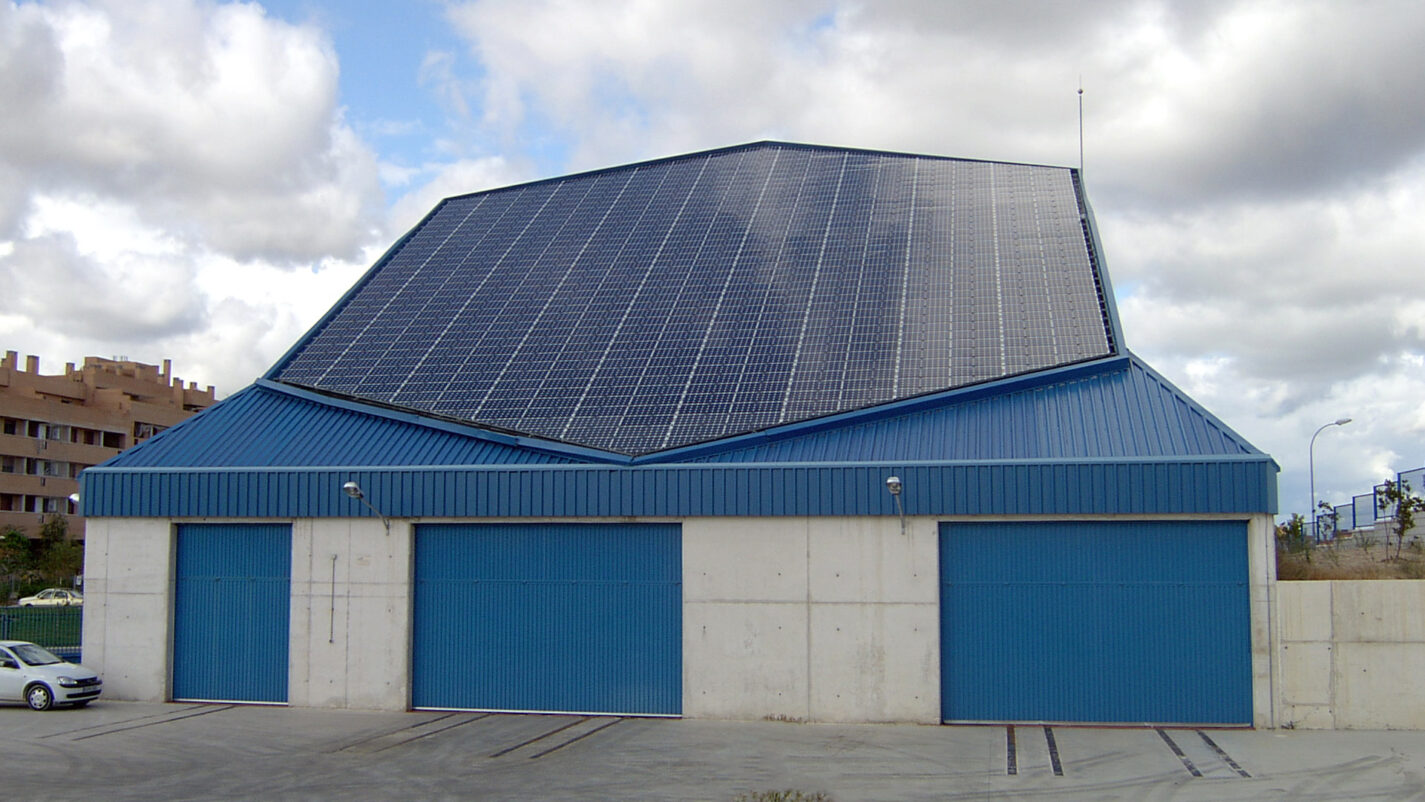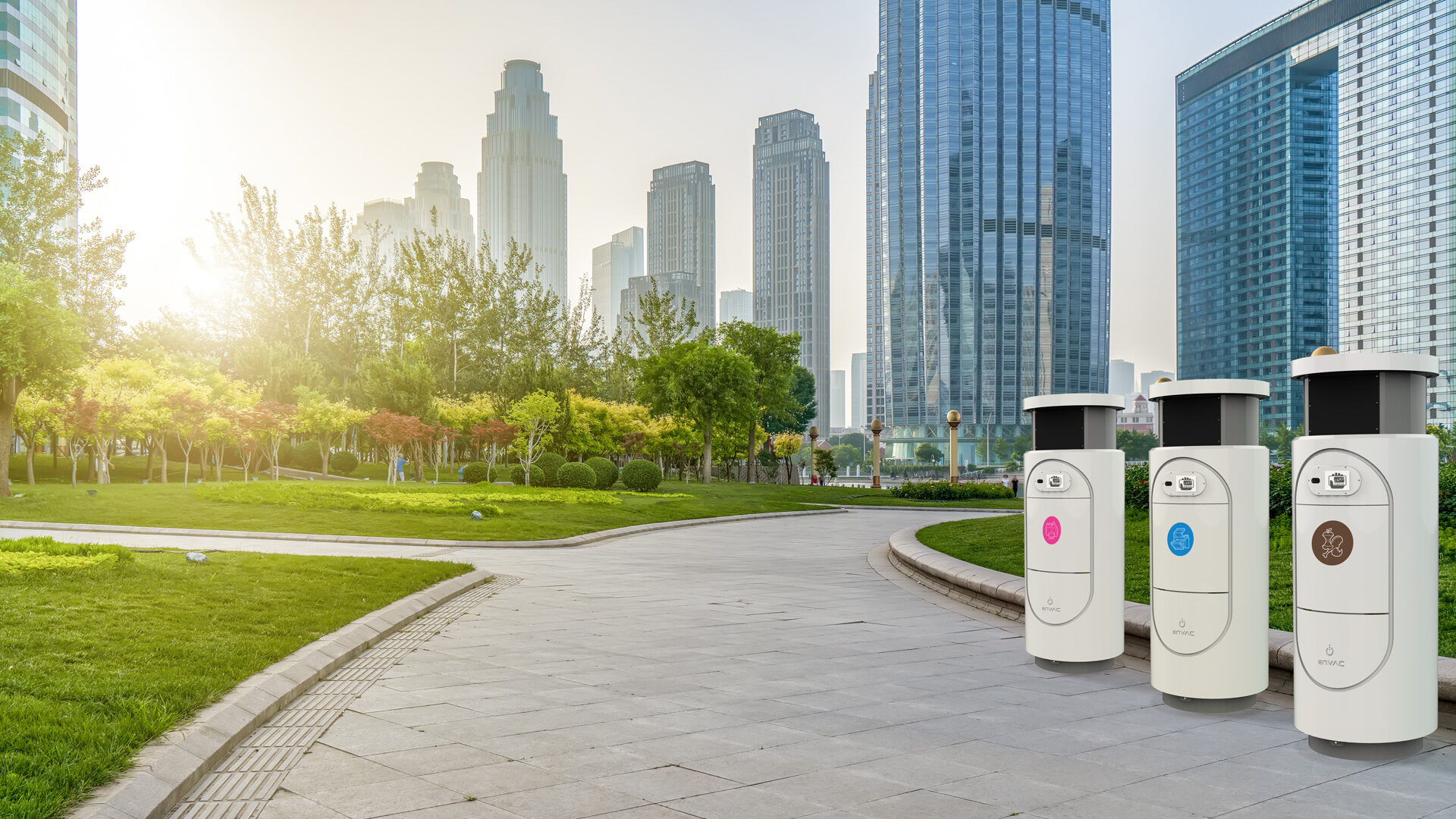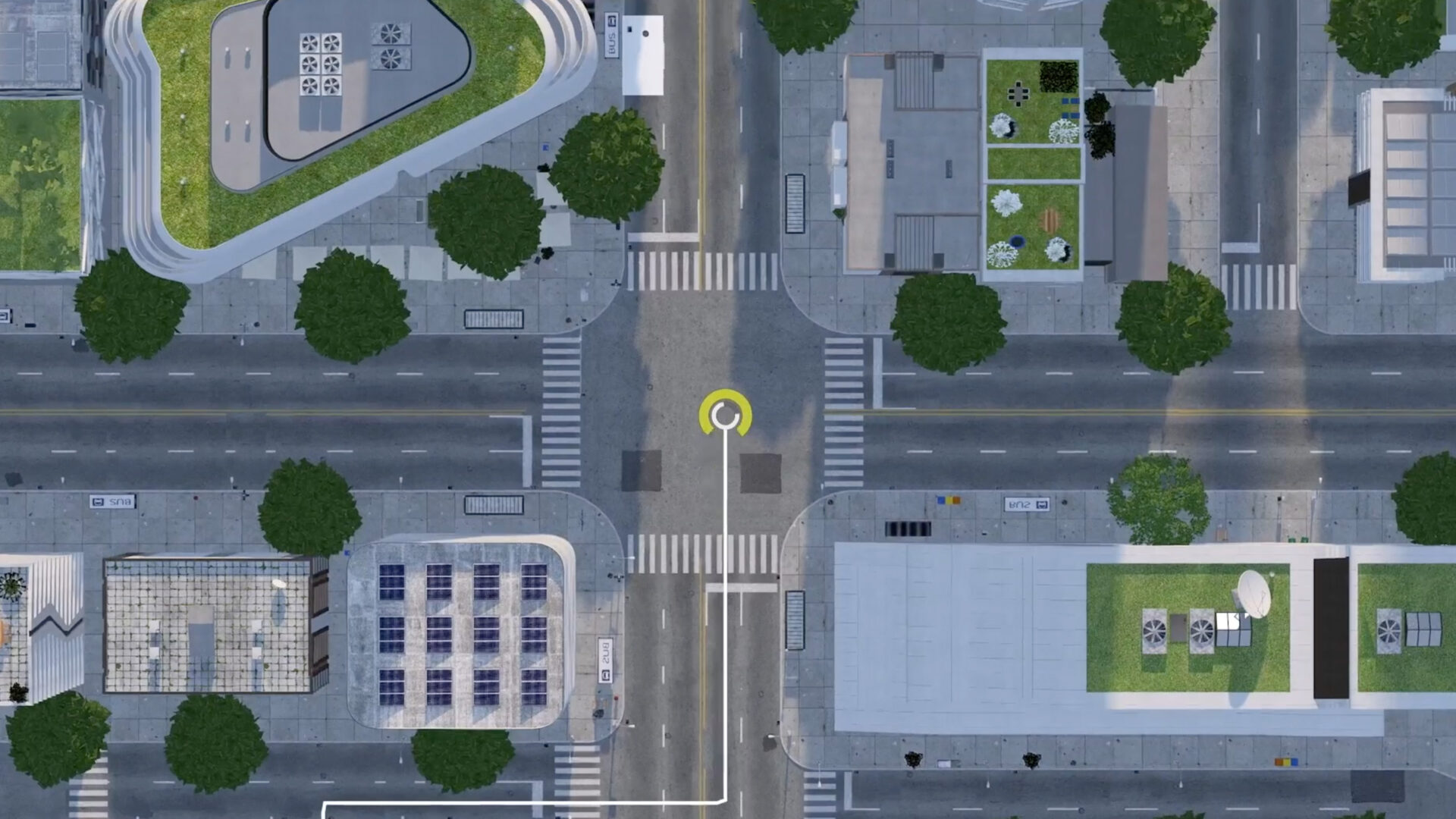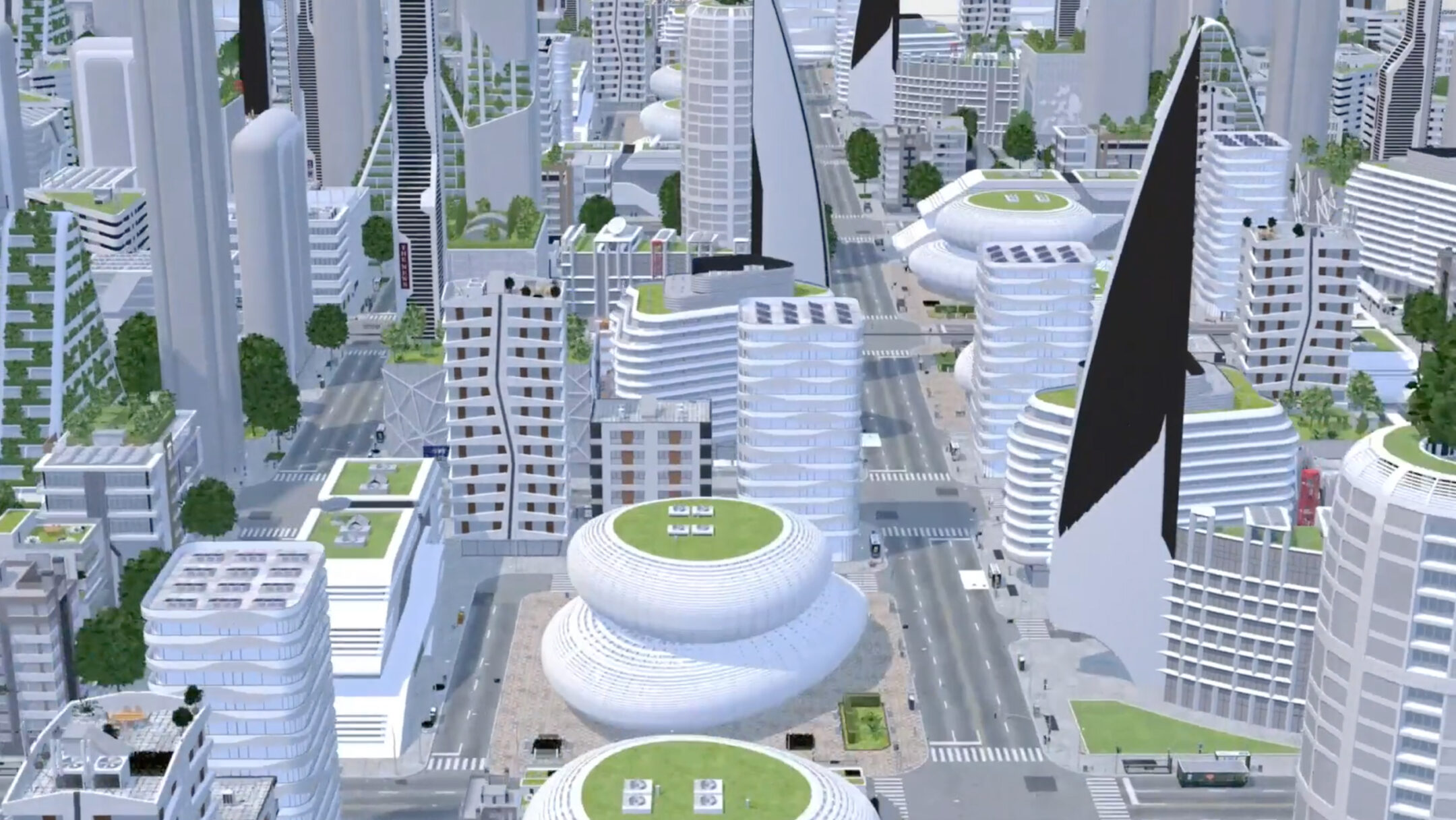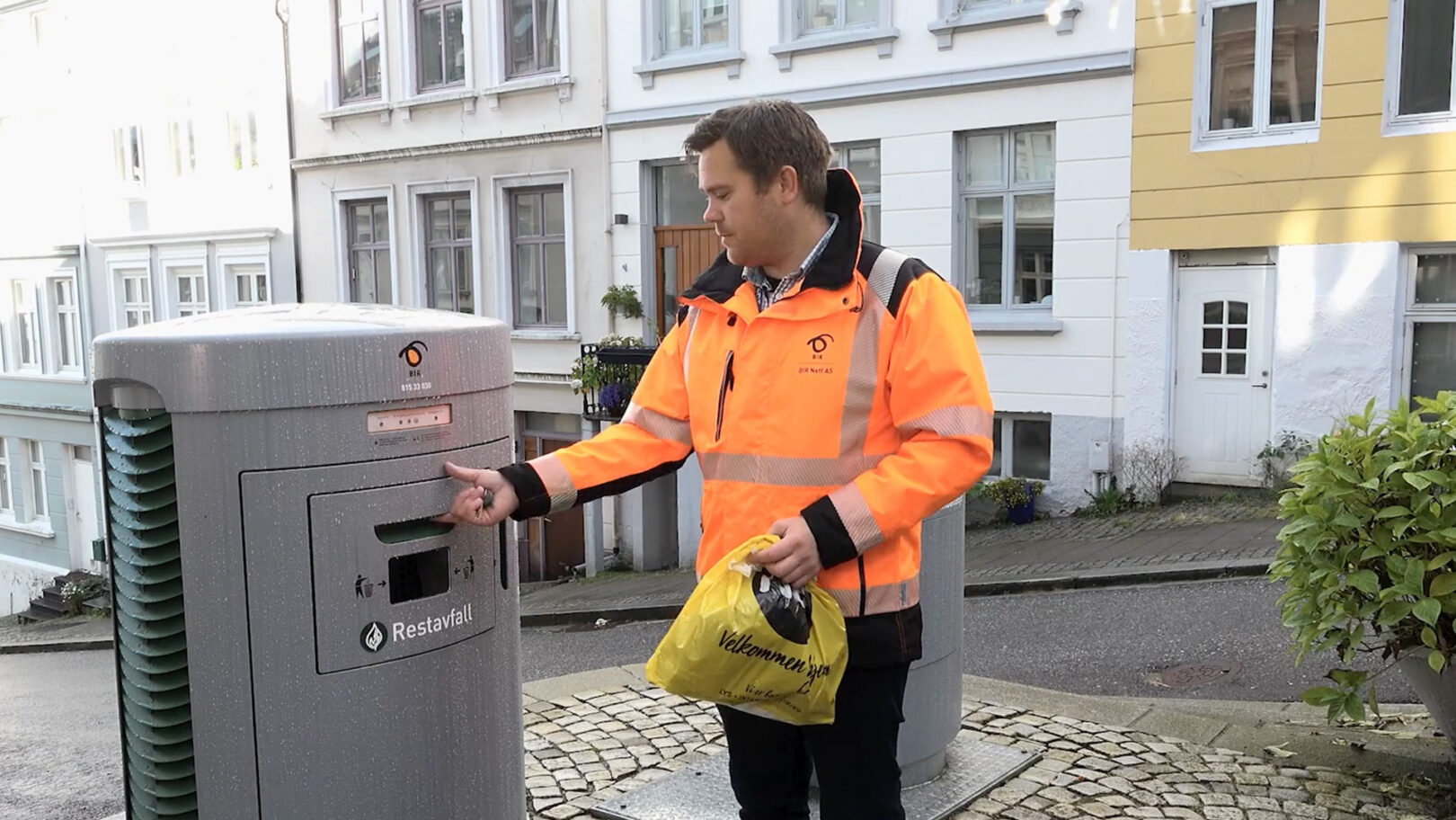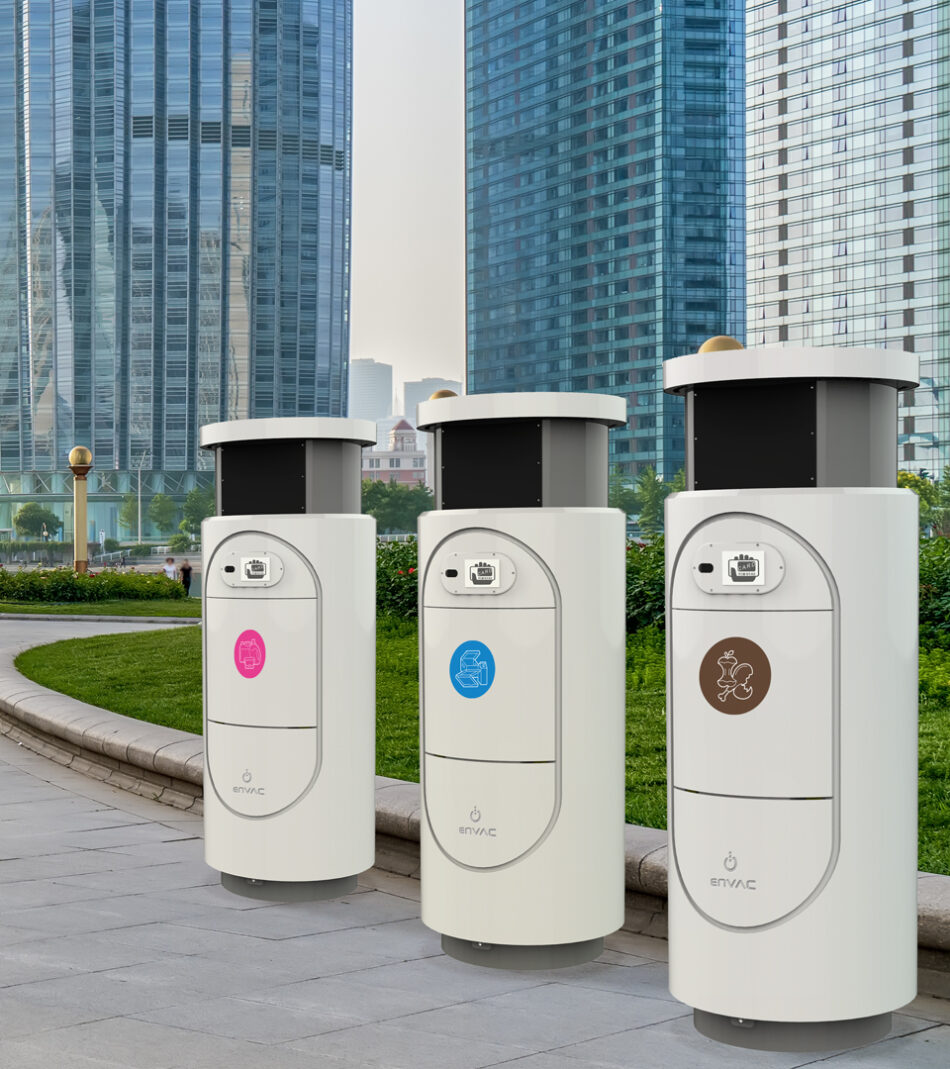
Smart and clean waste inlets
The only user interaction with our system is at the waste inlet where the users leave their waste. The units are typically placed conveniently within 30 meters from residential or office buildings in a group, with separate inlets for each different kind of waste. The users sort their waste at home and dispose of them in the respective units.
We want to make sorting easy to encourage recycling and thus, enable a circular economy for the future. Compared to traditional waste rooms or bins, our inlets are completely sealed, minimizing smells, mess and unsanitary conditions as well as the risk for vermin.
Going underground
The waste inlets connect to an underground pipe network. The emptying cycle is done at pre-programed times or when the units are full. The waste is transported at 70kph speed, using negative airflow that sucks the bags to a remote collection station. Emptying takes only minutes per waste stream. Being underground makes the Envac system resilient against extreme weather events and with smart automation, it is reliable even in times of societal pressure. The collection station can be located as far away as 2 km from the central urban area, reducing the impact of heavy traffic, such as noise, air pollution, and traffic jams.
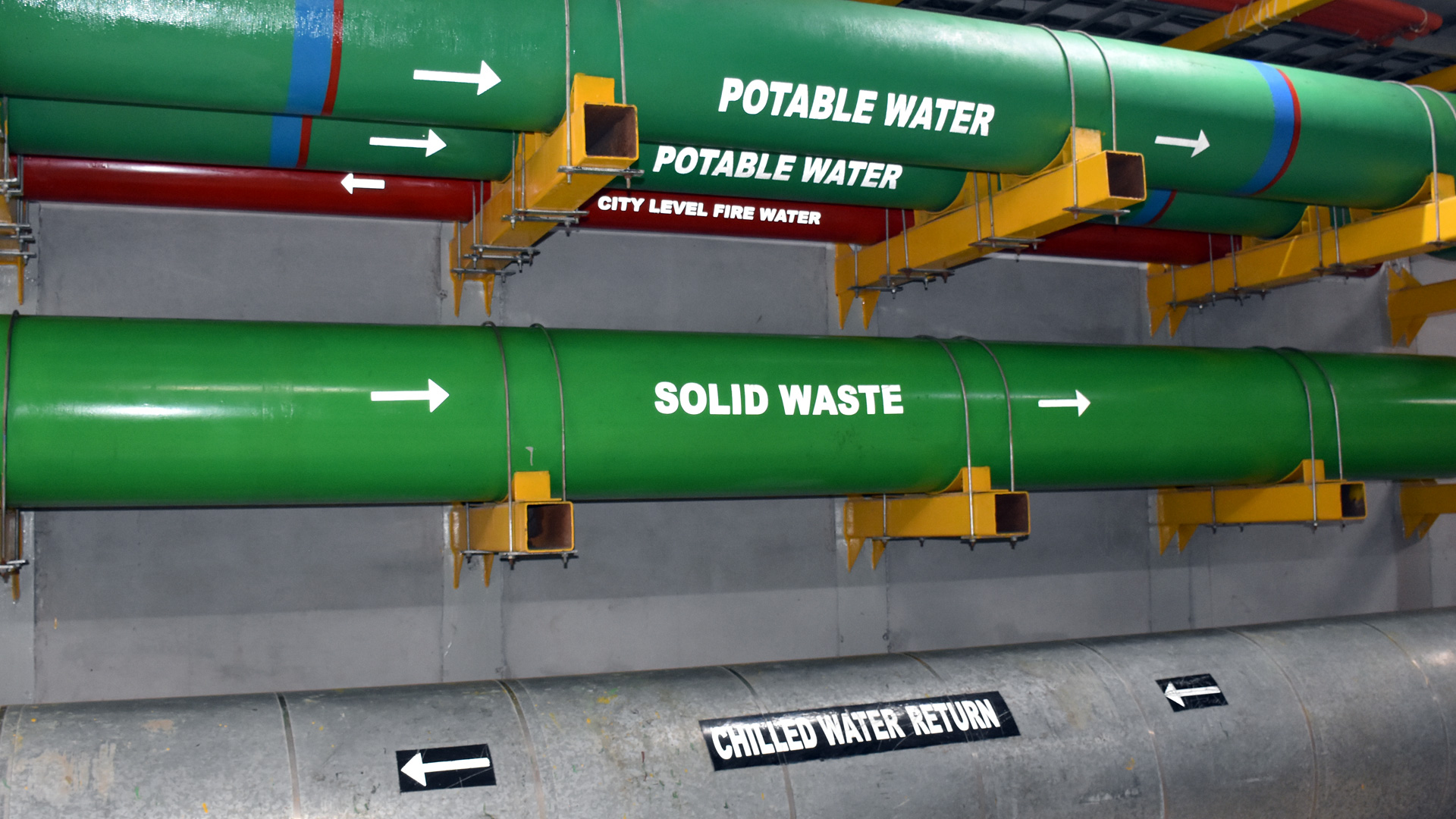
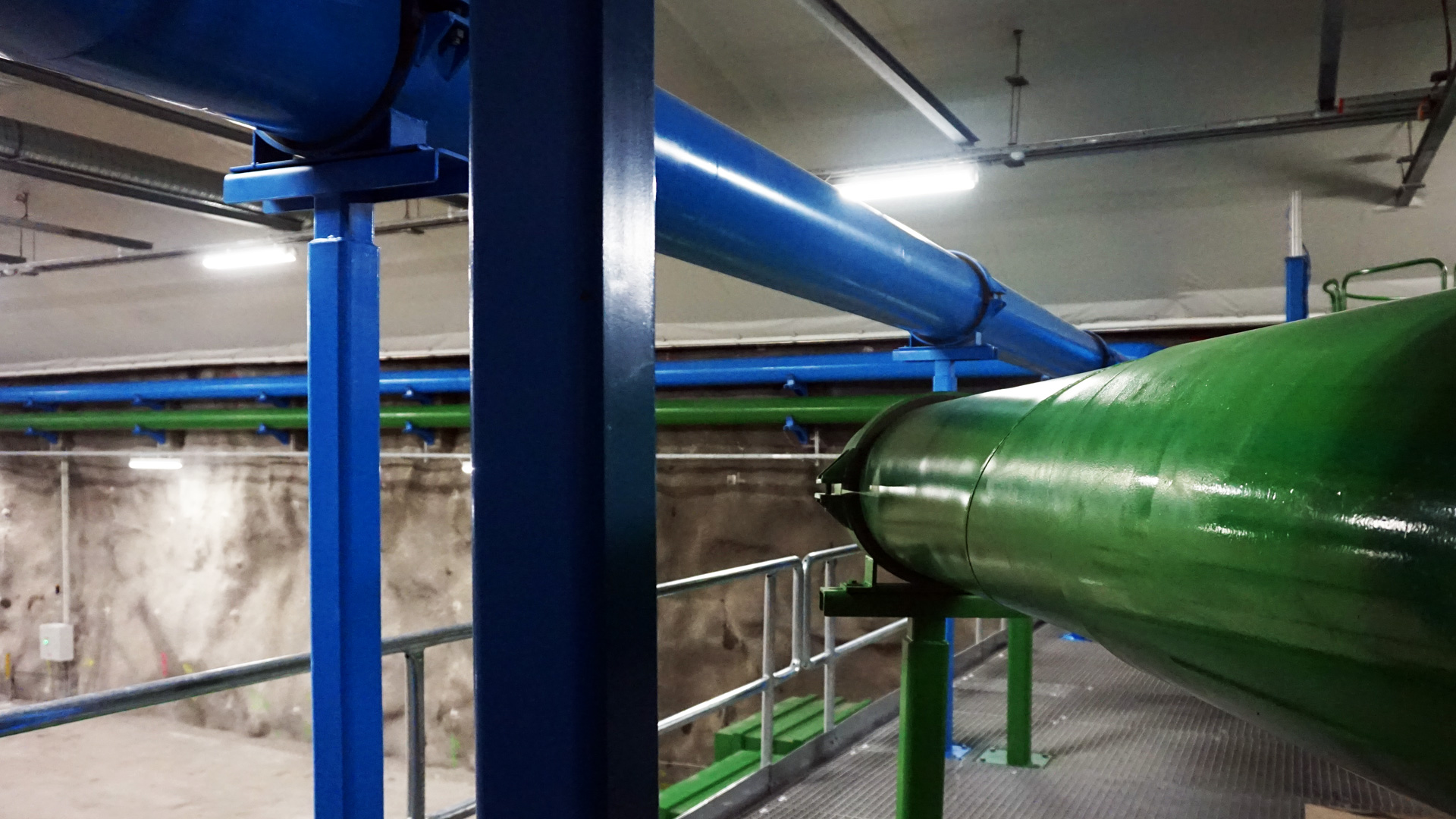
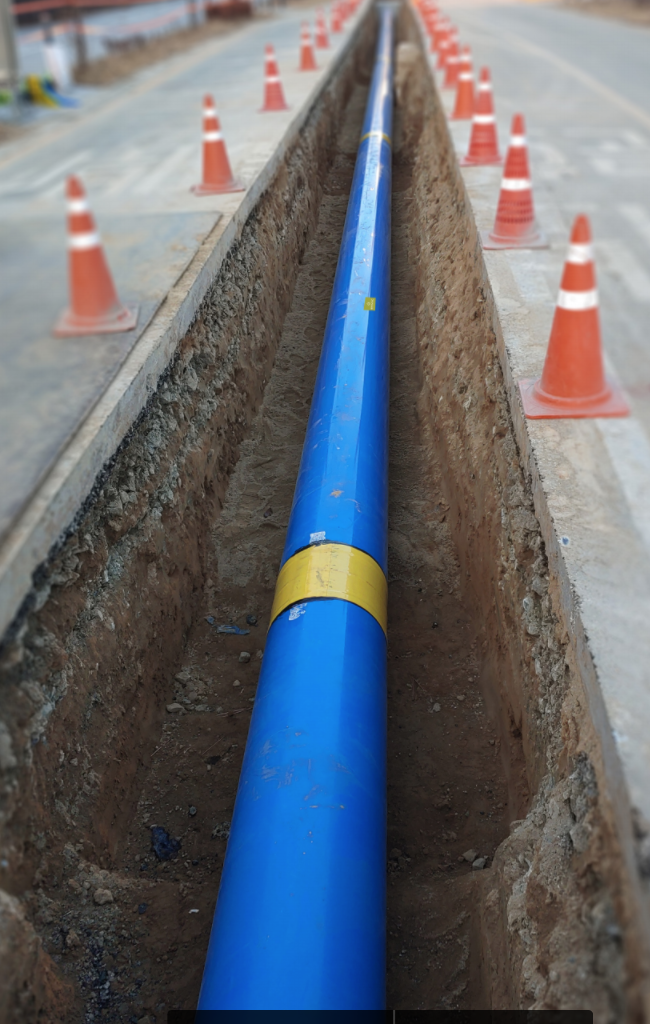
Next stop: the collection station
All the waste streams are transported in one single pipe network. Each waste stream is emptied separately and directed into the corresponding waste container at the collection station. The air used for transportation is cleaned through an industrial filter before it is released from the building.
Once a container is full, a standard collection vehicle takes the container away for processing of the waste. This single collection reduces waste-related heavy traffic, and its carbon emissions, by up to 90 per cent compared to traditional, multiple collections – making the Envac System a key component of change for reaching the United Nation’s Sustainable Development Goals and creating a greener planet.
